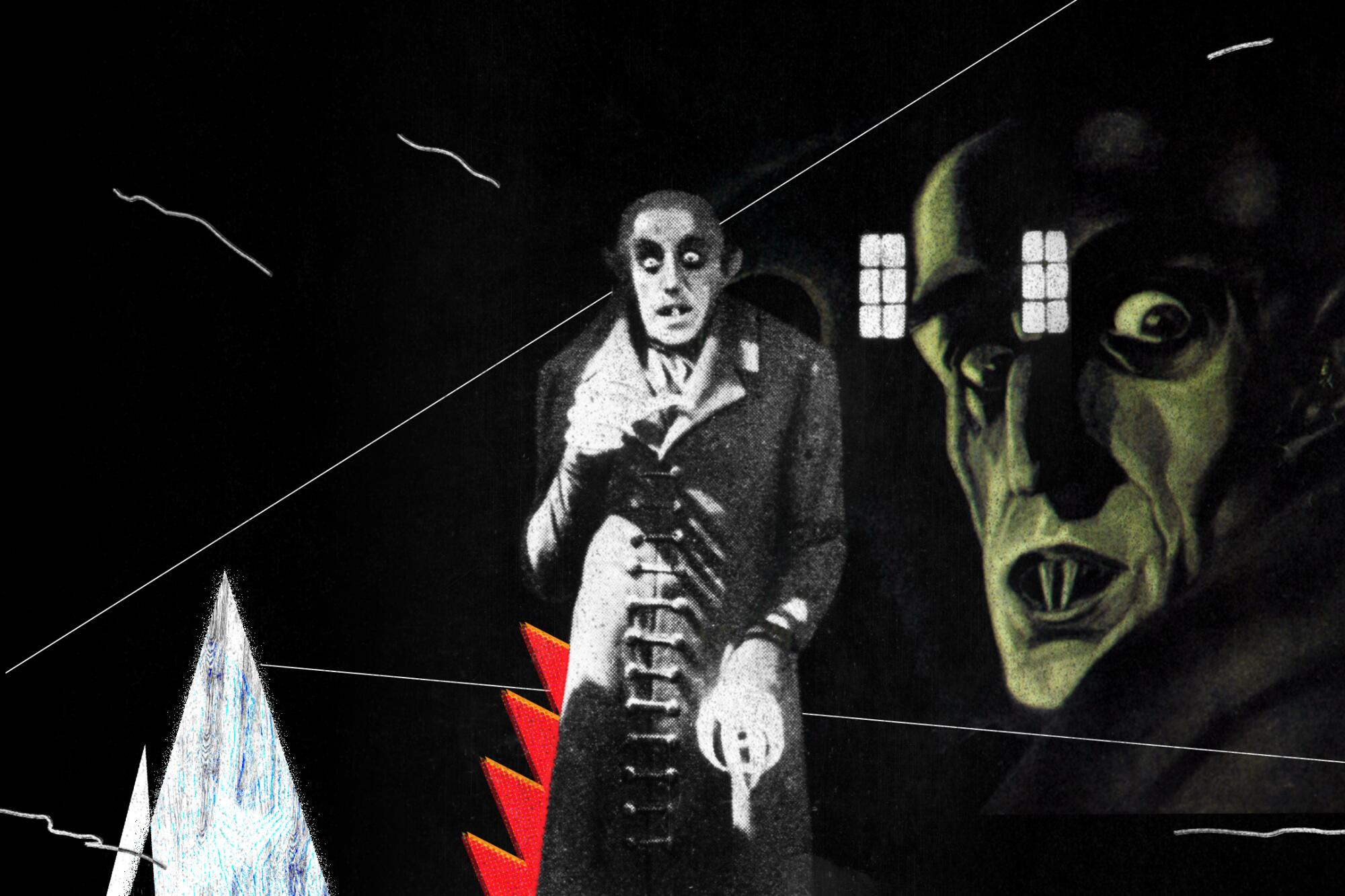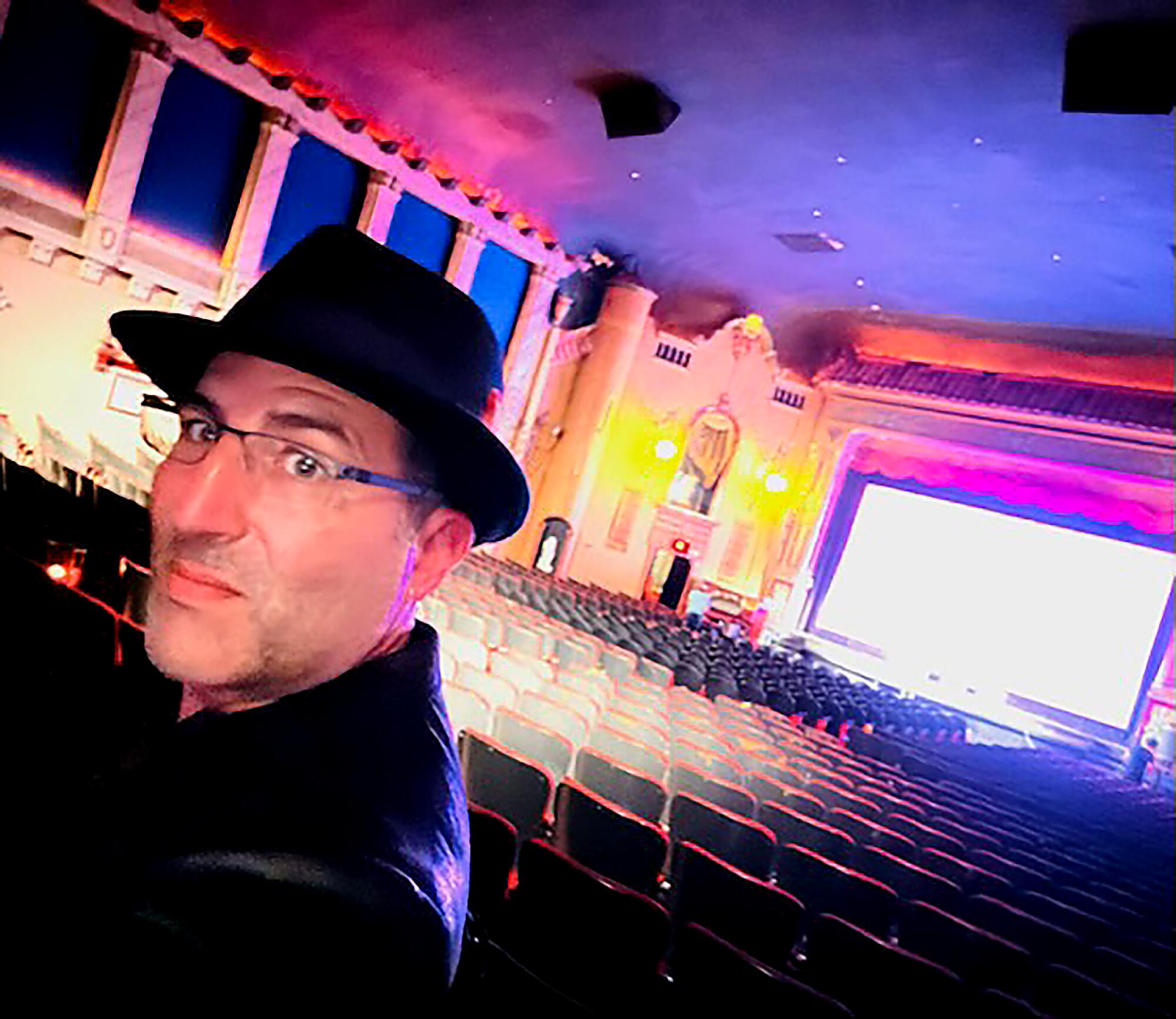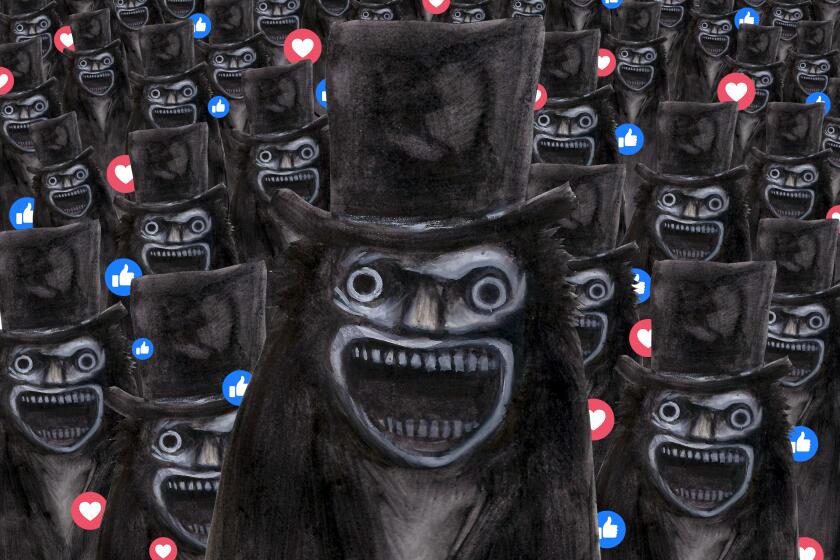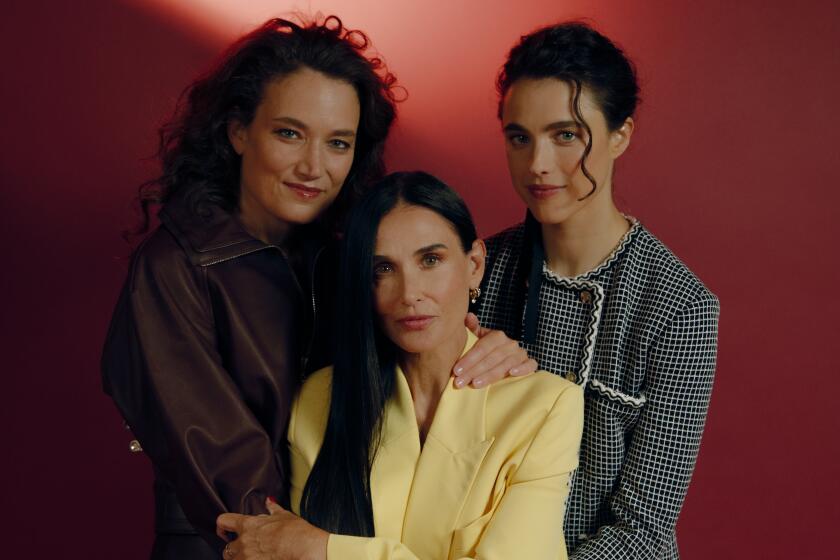
- Share via
The count with a penchant for sucking blood, like all the good horror villains who have followed in his footsteps, refuses to stay dead.
“Nosferatu: A Symphony of Horror,” F.W. Murnau’s celebrated silent-era vampire film, has been given new life for the 21st century: It’s returning to theaters this fall with its orchestral classical score replaced by Radiohead’s dense and moody albums “Kid A” and “Amnesiac.” Few people have actually heard the original Hans Erdmann score since much of it was lost; later shows either built off what remained or created new orchestral scores.
The original movie, an unauthorized 1922 “Dracula” adaptation now in the public domain, has inspired filmmakers for more than a century, including Werner Herzog’s 1979 “Nosferatu the Vampyre,” E. Elias Merhige’s 2000 “Shadow of the Vampire” with Willem Dafoe and Robert Eggers’ upcoming “Nosferatu.”
The revamped version, dubbed “Nosferatu X Radiohead,” marks the debut of “Silents Synced,” a series that marries classic silent films with alternative rock: “Nosferatu” will be followed by Buster Keaton’s “Sherlock Jr.” to the tunes of REM’s “Monster” and “New Adventures in Hi Fi” and other films featuring the music of Pearl Jam, They Might Be Giants, the Pixies and Amon Tobin. (The Buster Keaton film will be preceded by a Charlie Chaplin short backed by music from Girls Against Boys.)
“Silents Synced” has its world premiere Saturday at American Cinematheque’s Los Feliz Theatre. “Nosferatu” also will be shown at the Gardena Cinema Sept. 25 and twice more in October. The series rolls out nationally in 200 theaters on Oct. 4.
We check in with Australian director Jennifer Kent about her horror breakthrough, now 10 years old but still the stuff of nightmares and unlikely empowerment.
The project is the brainchild of Josh Frank, who has written plays and books about music, as well as owning and programming independent movie theaters in Austin, Texas. “This is the culmination of everything I’ve been involved with creatively,” he says. “The theme here is what else can you do with your favorite music? It’s about the theatrics of putting on a show for people and using what I’m passionate about, which is music and experimenting with narrative.”
Frank conceived of this idea two decades ago playing Nine Inch Nails’ album “The Fragile” while watching Fritz Lang’s classic 1927 silent “Metropolis.” (The weird synchronicity between rock music and old movies goes back to the 1990s when Pink Floyd fans noticed a surreal connection when “Dark Side of the Moon” was paired with “The Wizard of Oz.”)
“They were just perfect together,” he recalls, but Frank, who was then writing his first book (about the Pixies), lacked the know-how to make it a reality. He continued writing books but in 2009 he also opened Blue Starlite, a “mini drive-In” in an Austin alleyway. (He later added a second location and helped reopen an independent movie theater on the city’s east side.)

During the pandemic’s early days, when his drive-in was Austin’s only movie theater, Frank had trouble winding down at night and stayed up till dawn while his family slept, returning to his old fantasy armed with new knowledge.
“Now I had an audience and I knew how to run a movie theater but also [knew] what independent movie theaters needed that was lacking,” he says. “And I understood the music industry enough to find that outside-the-box way of presenting to the bands and their management and the labels what I wanted to do and why it was special.”
As Frank got started, he’d watch three or four silent movies in a row and then the next day he’d listen to his favorite albums, thinking about which ones might match with certain movies. Then he’d test it out. “A lot would work until the second or third song and then stop, but once a month, boom, it just worked and it was so exciting,” he recalls.
Frank felt it would be “sacrilege” to cut into the film itself but that the subtitles were left on screen for way too long — “people read pretty fast these days and you don’t need 30 seconds of the word ‘Help!’” — so he made nips and tucks to fit movie and music together. And eventually, he decided he didn’t have to find entire albums that fit perfectly, and could mix and match songs from each artist’s catalog. “Each movie is synced differently and that’s exciting,” Frank says.
A darkly surreal fantasia about Hollywood misogyny, “The Substance” delivers some of the year’s most fearless acting, along with a bold new directorial voice.
Frank, who equates the experience to him seeing the Pink Floyd Laser Light Show as a teen, loves the movies but is driven at least equally by his passion for music. “When I find the right album that pairs with the movie, something magical [happens] that creates a whole new context for the music and for the movie,” he says. “This music you’ve been listening to for 20 years, you suddenly have the same excitement the first time you heard it. When I put Radiohead up against ‘Nosferatu,’ there were many moments throughout where I got goosebumps.”
Though he’s open to eventually considering other music, say, David Bowie or Pink Floyd, he wanted his first series to be dedicated to his generation’s music. “This came from a Gen Xer who lived a very Gen X life and who was raised on this world and that music,” he says. However, he tested his creation with his parents, in-laws and other older people, who have said they normally wouldn’t listen to bands like Radiohead but liked the songs in the context of the movie.
He found getting most bands and their managers on board surprisingly easy. “I’ve never heard back about anything so quickly,” he says, although the Cure passed and Nine Inch Nails was in the middle of changing management. “These bands that have been heroes of mine since I was 16 said, ‘We get what you’re doing and we like it.’ That was really cool.”
The hardest part was learning to do the music licensing deals, he adds, especially since record labels don’t think creatively and some were only interested in him meeting impossibly high price tags. “I had a beautiful one with the Smashing Pumpkins and ‘Sunrise,’” he says. “A couple of labels wanted the amount of money it would cost to make a full Hollywood feature film, just because what I was asking for is something that people don’t normally ask, asking for two albums, not just one song.”
R.E.M.’s manager Bertis Downs said in an email, “The guys were all big Buster Keaton fans well before this left-field idea came down the pike.” Everyone in the band, Downs says, “likes the uncanny way the music and film work together.”
Music is the driving force behind Frank’s business plan as well. “I’m targeting music fans because it’s part of my theory that movie-loving people are already coming so let’s try expanding our audience and get other people to experience cinema,” he says.
And that’s important because Frank is equally passionate about helping his colleagues around the country working to keep independent movie houses alive in an era of streaming and short theatrical windows. “Especially coming out of the pandemic, they’re struggling, and I wanted to give those movie theaters something just for them,” he says. “Silents Synced” is licensed to theaters for one year with no streaming before that. He hopes that if a theater has a successful run with a particular film, it will then program it as a midnight movie to maximize its deal and keep audiences coming back.
“We’re making it very easy so it may become a regular thing that kids think is cool to do late at night, like I used to go to ‘The Rocky Horror Picture Show.’”
The response has been enthusiastic. “This will get audiences excited to see movies in the theater, “ says American Cinematheque programmer Imani Davis, adding that its theater is in a “music-loving part of town,” so she expects a heavy dose of music fans.
And Judy Kim, whose family has long owned the Gardena, is excited about starting with “Nosferatu” because she has a “huge horror following in my market.”
While Frank is thrilled to be supporting theater owners, she’s excited to be supporting his project. “I love people who hustle and try creating solutions,” Kim says. “I will show every one of Josh’s films.”
More to Read
The biggest entertainment stories
Get our big stories about Hollywood, film, television, music, arts, culture and more right in your inbox as soon as they publish.
You may occasionally receive promotional content from the Los Angeles Times.












